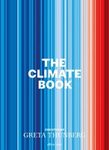![Visualizing Climate Change Visualizing Climate Change]()
Click to have a closer look
About this book
Customer reviews
Biography
Related titles
About this book
Climate change may be all around us, but it is often difficult to see. Carbon dioxide is invisible, and the prevailing imagery of climate change is often remote (such as ice floes melting) or abstract and scientific (charts and global temperature maps). Nobody really knows what 2 or 4 degrees of global warming might look like in their community. The causes of climate change that surround us are often only dimly perceived or concealed, and there are as yet few examples of effective community solutions that people can see. Using spectacular visual imagery, this book demonstrates new ways to make carbon and climate change visible where we care the most, in our own backyards and communities. It aims to change people's perceptions about their society, seen through the lens of climate change and the man-made carbon cycle that drives it.
Using 3D and 4D visualizations of future landscapes, community mapping, and iconic photographs, it illustrates not only the impacts of climate change where people live, but also the local causes (sources of community greenhouse gas emissions) and the possible local responses, to reduce carbon emissions and adapt to the impacts. The colour imagery stunningly reveals how we often conceal, misinterpret, or overlook the evidence of carbon usage and climate change impacts, and demonstrates various ways in which these critical realities can be made more tangible and compelling for local communities. This book provides powerful new visual tools for communities, action groups, and planners to use in building awareness and neighbourhood capacity, as a catalyst for accelerated action. It links community outreach and planning through future visioning processes based on the available science. These tools offer every community the chance to visualize their alternative futures, and choose or design their own path into an uncertain future.
Customer Reviews
Biography
Dr. Stephen Sheppard is Professor in Landscape Architecture and Forestry at the University of British Columbia, Vancouver, and Director of the Collaborative for Advanced Landscape Planning (CALP). He is a leading expert in visualization, and has over 30 years' experience internationally in research and practice in landscape planning, public involvement, environmental perception, and planning for climate change. He was a co-author on the Canadian National Assessment of climate change impacts and adaptation (BC Chapter), and served as a reviewer of the Fourth Assessment Report of the Intergovernmental Panel on Climate Change. He recently served as a Distinguished Scholar in Residence at the Peter Wall Institute for Advanced Studies, UBC.
By: Stephen RJ Sheppard
511 pages, colour photos, colour & b/w illustrations
Psychologist Joseph C. Pearce once said, 'Seeing within changes one's outer vision.' Could the reverse be true as well? If we saw without, created tangible visions of what cannot yet be seen, might we change deep within? This book--based on solid science and plenty of practical experience--starts from this affirmative premise: Yes, we visual animals do change our minds and hearts when we see for ourselves what is or could be. Nowhere is it more important to use the power of visioning and visualization than in the context of climate change. This book shows why this is so, and how it can be done effectively and ethically. We must learn from Stephen Sheppard how to use the power of visualization, and then harness the power of seeing, to facilitate the necessary changes toward a responsible, life-affirming, and sustainable future.
- Susanne C. Moser, Consultant and Researcher, University of California at Santa Cruz


































